SOURCE™: Purification at High Throughput with High Resolution and Easy Scale-Up
Use SOURCE™ media for purification of proteins, peptides or oligonucleotides.
Use SOURCE™ 15 for intermediate purification or polishing steps in laboratory or large-scale applications that require high resolution and high throughput (flows up to 1800 cm/h).
Use SOURCE™ 30 as an alternative to SOURCE™ 15 for intermediate purification or polishing steps in large-scale applications where speed rather than resolution is a priority (flows up to 2000 cm/h).
Run SOURCE™ columns on systems such as ÄKTAdesign, FPLC System and HPLC or systems using peristaltic pumps. Appendix 4 gives guidance on how to select the most suitable ÄKTAdesign system.
SOURCE™ media are based on a hydrophilic matrix made from monodispersed, rigid, polystyrene/divinyl benzene and substituted with quaternary ammonium (Q) or methyl sulfonate (S) groups (Figure 1). This combination confers extreme chemical and physical stability to the media. The small particle sizes allow fast binding and dissociation to facilitate high resolution while the uniformity and stability of the particles ensures high flow rates at low back pressure. The strong ion exchange groups (Q and S) maintain their charge over a broad pH range, allowing selection of the most suitable pH for each application. The high flow rates that can be used with SOURCE™ media are more likely to be limited by the equipment available rather than the physical properties of the media. Separation methods can be easily scaled up from columns such as RESOURCE™ Q or S, 1 mL prepacked with SOURCE™ 15 through to large scale columns such as FineLINE™.
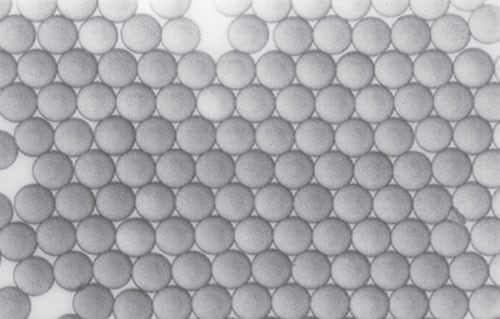
Figure 1.Uniform size distribution of SOURCE™ mono-dispersed particles
Purification options
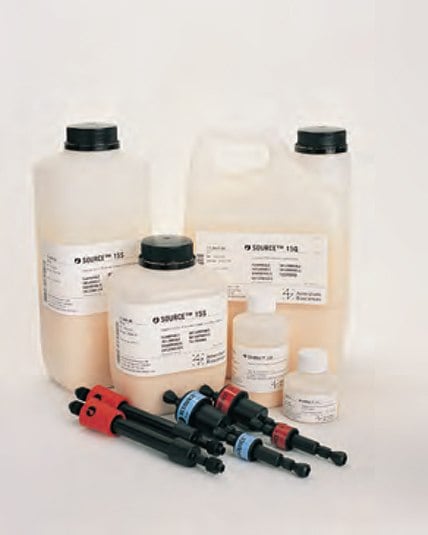
Figure 2.SOURCE™ is available in media packs and prepacked in Tricorn or RESOURCE™ columns.
Use prepacked RESOURCE™ columns (1 mL or 6 mL) for fast media selection, method scouting, group separations, sample concentration or clean-up.
Use SOURCE™ 15Q PE 4.6/100 to improve resolution by increasing column length with further optimization and as the first step towards scaling up.
For column packing:
Select a production column such as FineLINE for larger volumes.
Purification examples
Fast, high resolution separations
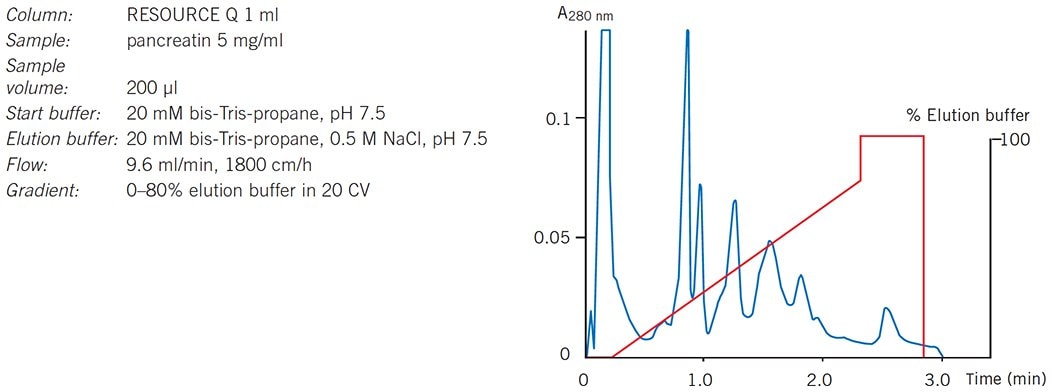
Figure 3.Separation of pancreatin on RESOURCE Q, 1 ml within 3 minutes.
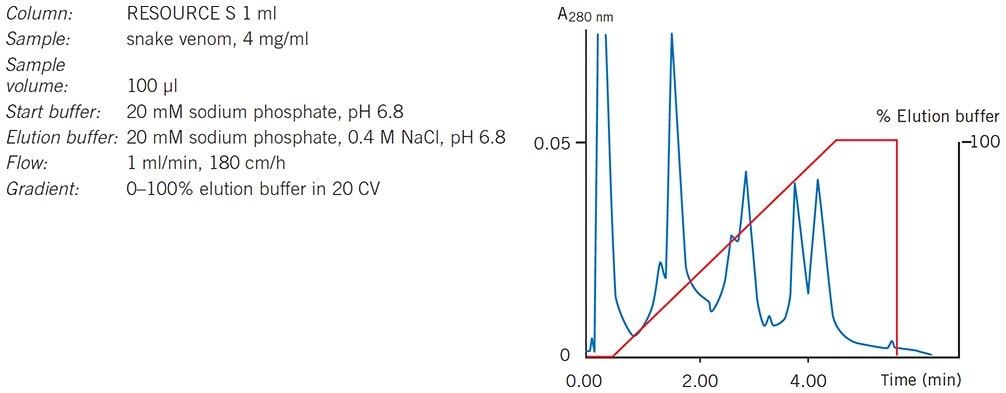
Figure 4.Separation of snake venom on RESOURCE™ S, 1 ml within 4 minutes.
Scaling up: resolution maintained
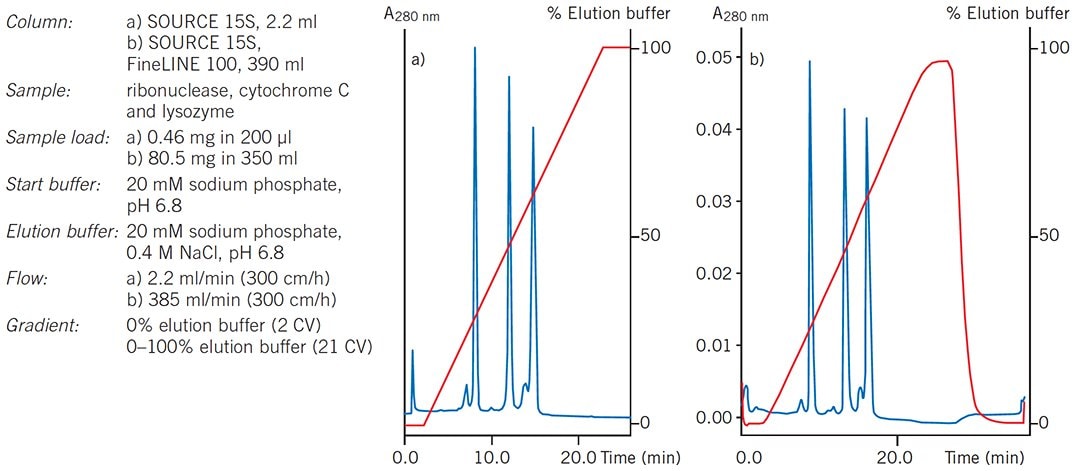
Figure 5.Separation of proteins scaled up from a 2.2 ml column to a 390 ml column.
Intermediate purification
Figure 6 shows an example of SOURCE™ 30Q used for an intermediate purification step in a large scale process. Recombinant P. aeruginosa exotoxin A, produced as a periplasmic protein in E. coli, was initially purified with STREAMLINE DEAE expanded bed adsorption, followed by hydrophobic interaction chromatography (HIC) on Phenyl Sepharose 6 Fast Flow (high sub). The fraction of interest was then further purified on SOURCE™ 30Q before a final HIC polishing step on SOURCE™ 15PHE to remove the final contaminants.
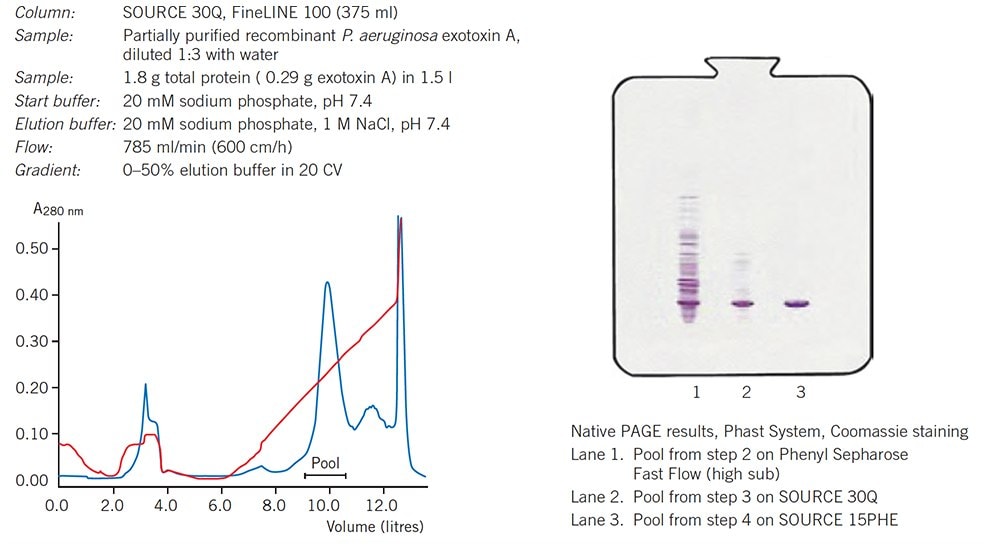
Figure 6.Intermediate purification of recombinant P. aeruginosa exotoxin A on SOURCE™ 30Q.
Separations under extreme pH conditions
The high pH stability of SOURCE™ media makes them well-suited for applications requiring conditions of extreme pH such as purification of certain peptides and synthetic oligonucleotides, as shown in Figures 7 and 8.
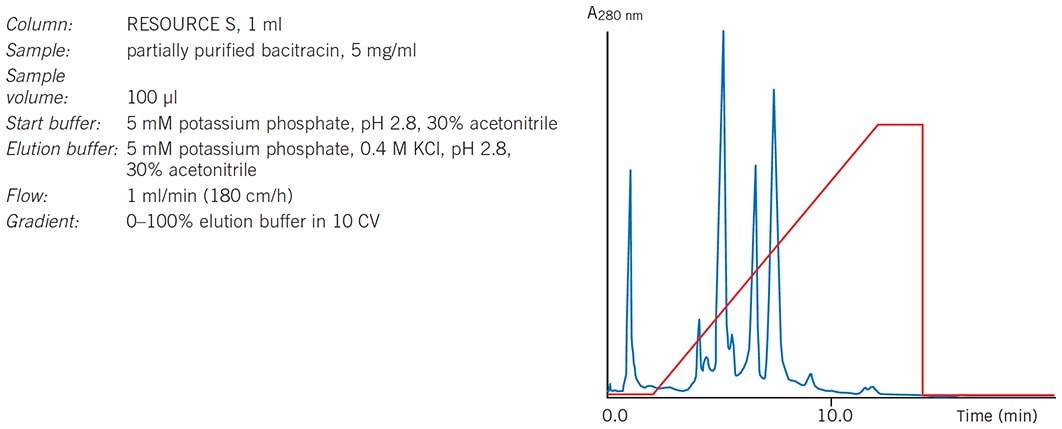
Figure 7.Intermediate purification of the peptide bacitracin from Bacillus subtilis on RESOURCE™ Q, 1 mL.
Method optimization
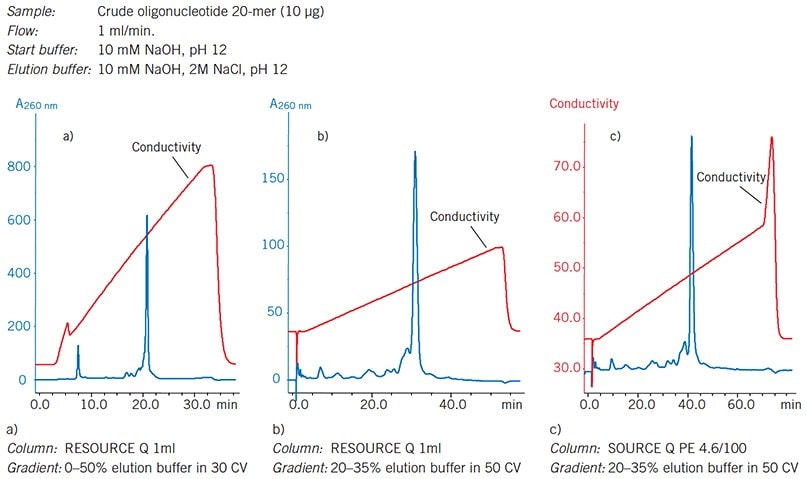
Figure 8.Manipulation of gradient slope and shape to maximize resolution. Initial purification of a 20 mer oligonucleotide was optimized on RESOURCE™ Q 1 mL and transferred to SOURCE™ Q PE 4.6/100 to further increase resolution by increasing bed height to 10 cm.
Batch-to-batch reproducibility
Batch-to-batch reproducibility is particularly important for media used for scaling-up and large scale industrial applications which are under strict regulatory control. Figures 9 and 10 demonstrate the high batch-to-batch reproducibility of SOURCE™ 15 and SOURCE™ 30 media.
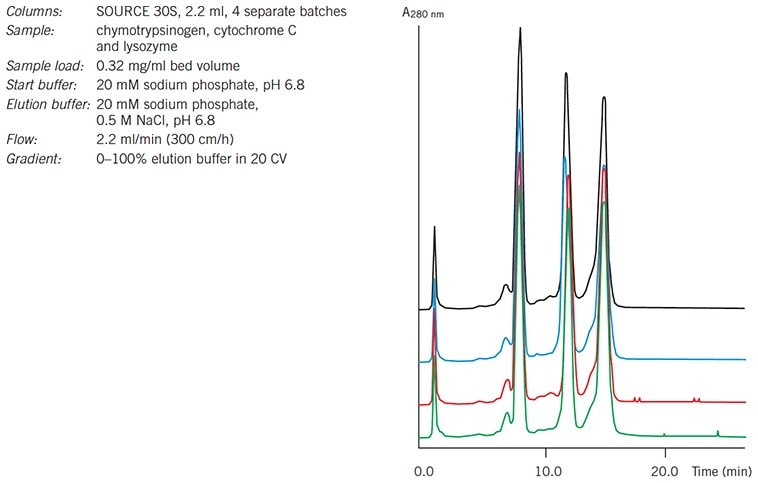
Figure 9.Selectivity tests on 4 production batches of SOURCE™ 30S.
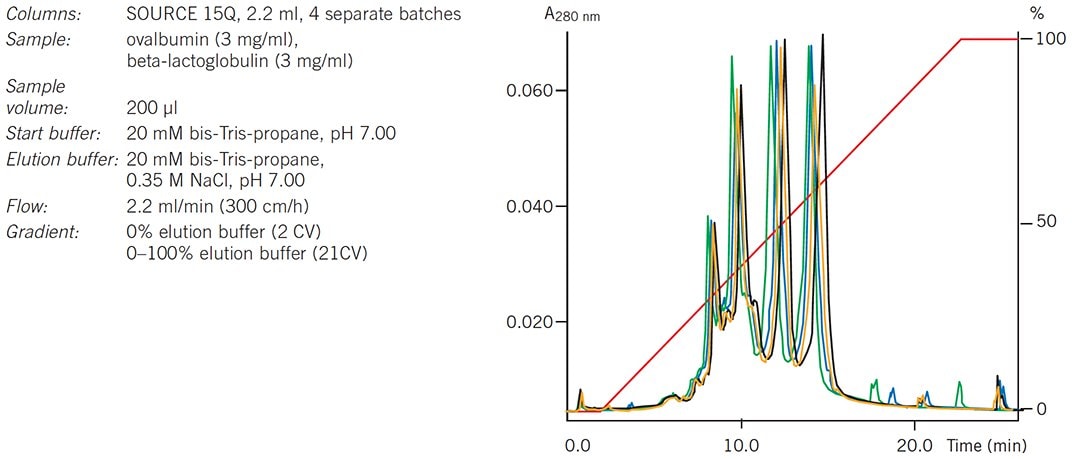
Figure 10.Selectivity tests on 4 production batches of SOURCE™ 15Q.
Performing a separation
Guidelines for selection of media, buffer, pH and ionic strength conditions and method optimization are given in Chapter 2. Use the instructions given here as a basis from which to optimize a separation.
Correct sample and buffer preparation is essential in order to achieve optimal separation and avoid any deterioration in column performance. Samples must be fully dissolved and free from particles or other material likely to interfere with the separation. Refer to Chapter 2 and Appendix 1 for recommendations and advice on sample preparation.
Filter buffers after all salts and additives have been included. Use high quality water and chemicals. Filter solutions using filters of 0.45 μm or 0.22 μm for 30 μm particles and 0.22 μm filters for 15 μm particles. To avoid formation of air bubbles in a packed column, ensure that column and buffers are at the same temperature when preparing for a run.
The pH of the start buffer should be at least 0.5–1 pH unit above the pI of the target substance when using an anion exchanger (Q) and 0.5–1 pH unit below the pI of the target substance when using a cation exchanger (S). See Appendix 2 for recommendations on volatile and non-volatile buffer systems for anion and cation exchangers.
For samples with unknown charge properties, try the following:
- anion exchange (Q)
start buffer: pH 8.0
elution buffer: start buffer including 1 M NaCl, pH 8.0 - cation exchange (S)
start buffer: pH 6.0
elution buffer: start buffer including 1 M NaCl, pH 6.0
Users of ÄKTAdesign systems with BufferPrep functionality can select one of the buffer recipes recommended for anion exchange chromatography at pH 8 or cation exchange chromatography at pH 6.
First time use or after long term storage:
- To remove ethanol, wash with 5 column volumes of distilled water at 2 mL/min (SOURCE™ 15 4.6/100 PE), 4 mL/min (RESOURCE™ 1 mL), 6 mL/min (RESOURCE™ 6 mL) or 200 cm/h for SOURCE™ packed in larger columns. This step ensures removal of ethanol and avoids the risk of precipitation if buffer salts were to come into contact with the ethanol. The step can be omitted if precipitation is not likely to be a problem.
- Wash with 5 column volumes of start buffer, at 2 mL/min (SOURCE™ 15 4.6/100 PE), 4 mL/min (RESOURCE™ 1 mL), 6 mL/min (RESOURCE™ 6 mL) or 200 cm/h for SOURCE™ packed in larger columns.
- Wash with 5 column volumes of elution buffer, same flow as step 2.
- Wash with 5 column volumes of start buffer, same flow as step 2.
Perform a blank run to check conductivity and pH.
Separation by gradient elution
Flow: 2 mL/min (SOURCE™ 15 4.6/100 PE), 4 mL/min (RESOURCE™ 1 mL), 6 mL/min (RESOURCE™ 6 mL) or 200 cm/h for SOURCE™ packed in larger columns.
Collect fractions throughout the separation.
- Equilibrate column with 5–10 column volumes of start buffer or until the baseline, eluent pH and conductivity are stable.
- Adjust the sample to the chosen starting pH and ionic strength and apply to the column.
- Wash with 5–10 column volumes of start buffer or until the baseline, eluent pH and conductivity are stable i.e. when all unbound material has washed through the column.
- Begin elution using a gradient volume of 10–20 column volumes and an increasing ionic strength up to 0.5 M NaCl (50%B).
- Wash with 5 column volumes of 1 M NaCl (100%B) to elute any remaining ionically-bound material.
- Re-equilibrate with 5–10 column volumes of start buffer or until eluent pH and conductivity reach the required values.
Separation by step elution
Flow: 2 mL/min (SOURCE™ 15 4.6/100 PE), 4 mL/min (RESOURCE™ 1 mL), 6 mL/min (RESOURCE™ 6 mL) or 200 cm/h for SOURCE™ packed in larger columns.
Collect fractions throughout the separation.
- Equilibrate column with 5–10 column volumes of start buffer or until the baseline, eluent pH and conductivity are stable.
- Adjust the sample to the chosen starting pH and ionic strength and apply to the column.
- Wash with 5–10 column volumes of start buffer or until the baseline, eluent pH and conductivity are stable i.e. when all unbound material has washed through the column.
- Elute with 5 column volumes of start buffer + NaCl at chosen ionic strength.
- Repeat step 4 at higher ionic strengths until the target protein(s) has been eluted.
- Wash with 5 column volumes of a high salt solution (1 M NaCl in start buffer) to elute any remaining ionically bound material.
- Re-equilibrate with 5–10 column volumes of start buffer or until eluent pH and conductivity reach the required values.
Save time by using higher flow rates during the high salt wash and re-equilibration steps. Do not exceed the maximum recommended flow for the medium.
If ionic detergents have been used, wash the column with 5 column volumes of distilled water, followed by 2 column volumes 2 M NaCl. Re-equilibrate with at least 10 column volumes of start buffer until the UV baseline, eluent pH and/or conductivity are stable. Organic solvents such as ethanol can be used to remove non-ionic detergents. When selecting an organic solvent, check the chemical stability of the medium to determine a suitable concentration.
Check column performance regularly by determining column efficiency and peak symmetry.
See Appendix 3.
Cleaning
Correct preparation of samples and buffers and application of a high salt wash (1 M NaCl) at the end of each separation should keep most columns in good condition. However, reduced performance, a slow flow rate, increasing back pressure or complete blockage are all indications that the medium needs to be cleaned using more stringent procedures in order to remove contaminants.
It is recommended to reverse the direction of flow during column cleaning so that contaminatants do not need to pass through the entire length of the column. The number of column volumes and time required for each cleaning step may vary according to the degree of contamination. If the cleaning procedure to remove common contaminants does not restore column performance, change the top filter (when possible) before trying alternative cleaning methods. Care should be taken when changing a filter as this may affect the column packing and interfere with performance.
The following procedure should be satisfactory to remove common contaminants:
- Wash with at least 2 column volumes of 2 M NaCl at 0.2 mL/min (SOURCE™ 15 4.6/100 PE), 1 mL/min (RESOURCE™ 1 mL), 6 mL/min (RESOURCE™ 6 mL) or 40 cm/h with a contact time of 1–2 h for SOURCE™ packed in larger columns.
- Wash with at least 4 column volumes of 1 M NaOH (same flow as in step 1).
- Wash with at least 2 column volumes of 2 M NaCl (same flow as in step 1).
- Rinse with at least 2 column volumes of distilled water (same flow as in step 1) until the UV-baseline and the eluent pH are stable.
- Wash with at least 4 column volumes of start buffer or storage buffer (same flow as in step 1) until eluent pH and conductivity have reached the required values.
To remove precipitated proteins, lipids, hydrophobically bound proteins or lipoproteins,refer to Appendix 1.
Media characteristics
Composition: rigid, monodisperse, polystyrene/divinyl benzene particles (15 mm) with an optimized pore size distribution. The base matrix is substituted with quaternary amino groups (Q) or methyl sulfonate groups (S).
*Long term pH stability refers to the pH interval where the medium is stable over a long period of time without adverse side effects on the chromatography performance.
Short term pH stability refers to the pH interval for regeneration, cleaning-in-place and sanitization procedures.
All ranges are estimates based on the experience and knowledge within Cytiva.
Chemical stability
For daily use, SOURCE™ media are stable in all common, aqueous buffers pH 2–12, denaturing agents (8 M urea, 6 M guanidine hydrochloride), 75% acetic acid, 1 M NaOH, 1 M HCl, 70% ethanol, 30% acetonitrile and with additives such as non-ionic detergents.
Avoid cationic detergents with SOURCE™ S. Avoid anionic detergents with SOURCE™ Q. Avoid oxidizing agents.
Storage
For column storage, wash with 5 column volumes of distilled water followed by 5 column volumes of 20% ethanol. Include 0.2 M sodium acetate in the 20% ethanol solution for SOURCE™ S. Degas the ethanol/water mixture thoroughly and apply at a low flow rate to avoid over-pressuring the column. Store at room temperature or, for long periods, store at +4 °C to +8 °C. Ensure that the column is sealed well to avoid drying out. Whenever possible, use the storage and shipping device if supplied by the manufacturer. Store unused media at +4 °C +30 °C in 20% ethanol. Do not freeze.
Materials
如要继续阅读,请登录或创建帐户。
暂无帐户?